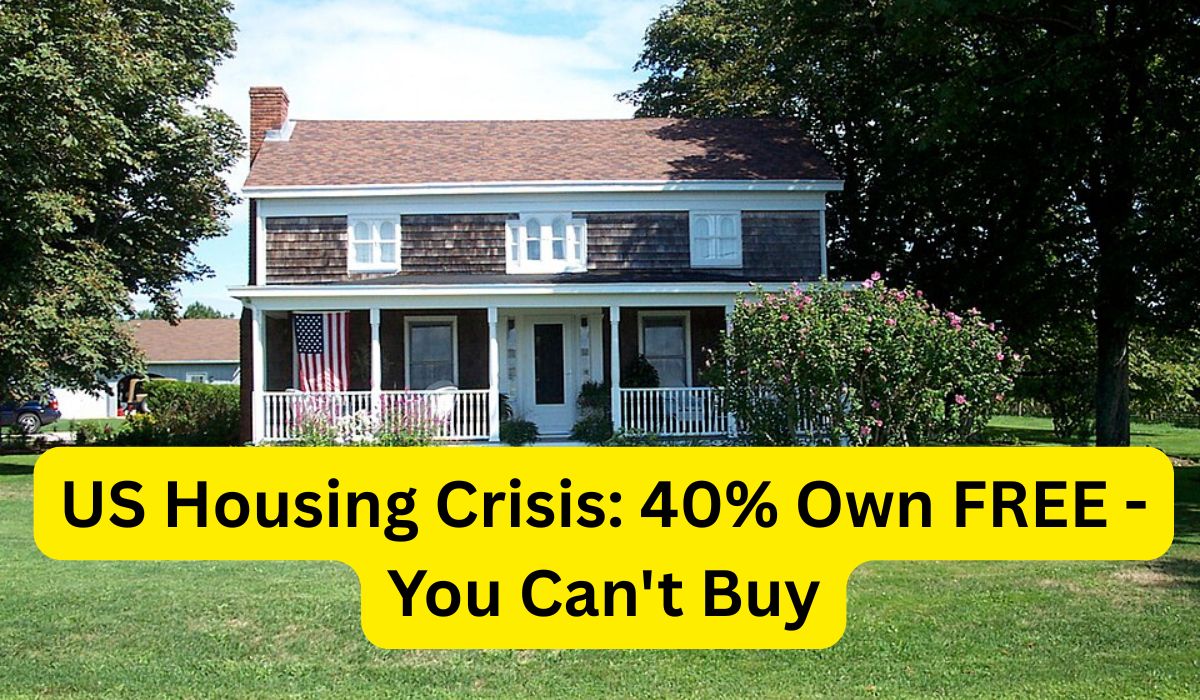The American housing market has reached a critical inflection point that’s reshaping generational wealth distribution. More than 40% of homeowners now own their properties outright—the highest share ever recorded—and this historic shift is fundamentally altering housing accessibility for younger buyers.
This isn’t just a statistical milestone. It represents a structural transformation in how housing inventory moves through the market, creating what some analysts are calling a “locked inventory crisis” that’s particularly acute in high-demand suburban areas.
The Debt-Free Homeownership Surge
The numbers reveal a stark reality: Baby Boomers are aging into debt-free homeownership at unprecedented rates, and they’re staying put. This generational trend is removing available housing stock from the market precisely when demand from younger buyers remains elevated.
What’s driving this phenomenon? Multiple factors converge here. The 2008-2009 financial crisis fundamentally changed how an entire generation views mortgage debt. Many homeowners who lived through that period developed a strong aversion to carrying mortgage obligations, accelerating their payoff schedules even when interest rates were historically low.
The psychology behind this shift runs deeper than simple risk aversion. Witnessing banks profit substantially from mortgage lending—even on loans that ultimately failed—created lasting skepticism about the mortgage system itself. Many homeowners questioned whether paying interest to financial institutions made sense when they could redirect those funds toward principal reduction.
The Lock-In Effect Creates Market Paralysis
Here’s where the housing crisis intensifies. Debt-free homeowners face a brutal economic calculation when considering relocation: Why trade a fully-owned property for a new mortgage at current interest rates?
Even homeowners who secured ultra-low rates before and during the COVID period—mortgages in the 2.5% to 3.5% range—have zero incentive to move. That’s essentially free money in today’s rate environment. Giving up a 2.5% mortgage to buy a different property at 6% or 7% makes no financial sense whatsoever.
This creates a feedback loop. As debt-free and low-rate homeowners stay put, inventory tightens. Prices remain elevated. Younger buyers get squeezed further out of the market.
The impact shows up in unexpected places. School districts across regions like Long Island are experiencing enrollment declines despite population density remaining high or increasing. The explanation? Older residents aren’t moving out as previous generations did, while younger families struggle to find entry points into these communities.
Geographic Constraints Compound the Problem
The housing shortage isn’t easily solved through new construction in many desirable areas. Take established suburban communities: there’s simply nowhere to build without demolishing existing structures. People want to live in places like Garden City on Long Island, but those communities are essentially built out.
This geographic reality means housing turnover becomes the only mechanism for increasing availability. When that turnover slows dramatically—as it has with the debt-free ownership trend—the supply-demand imbalance becomes structural rather than temporary.
Policy Response and Interest Rate Dynamics
Treasury Secretary Scott Bessent has addressed this housing affordability crisis directly in recent public statements. According to his official remarks, he’s working to bring down longer-term interest rates through strategic Treasury management, recognizing that Federal Reserve policy under Chair Jerome Powell has contributed to what some officials view as a housing market recession.
The potential for 30-year fixed mortgage rates to drop below 6% by year-end represents progress, though it doesn’t solve the fundamental problem. Lower rates help on the margins—they improve affordability calculations and may encourage some movement—but they don’t address the core issue of debt-free homeowners who have no mortgage to refinance and limited motivation to relocate.
What’s particularly noteworthy is the policy tension emerging between Treasury management of longer-term rates and Federal Reserve decisions on short-term rates. The Fed’s aggressive rate hiking campaign to combat inflation had the intended effect of cooling economic activity, but the collateral damage to housing affordability has been severe.
The Generational Wealth Transfer Implications
This debt-free homeownership trend represents a massive intergenerational wealth transfer that’s still unfolding. Homeowners who purchased properties decades ago at dramatically lower price points, paid off mortgages over time, and now own valuable assets outright have captured extraordinary wealth gains.
Meanwhile, younger buyers face the inverse situation: high purchase prices, elevated interest rates, and limited inventory. The wealth-building mechanism that previous generations accessed through homeownership has become substantially more difficult to tap into.
The frustration among younger buyers is palpable and economically rational. They’re told to save, work hard, and buy homes—but the pathway that worked for their parents’ generation looks fundamentally different now.
What This Means for the Market Going Forward
The housing market is experiencing a structural shift that policy tweaks alone won’t quickly resolve. Several dynamics will determine how this plays out:
Interest rate trajectory matters. If rates continue declining toward the mid-5% range or lower, some marginal movement occurs. Buyers gain purchasing power, and a subset of homeowners might consider relocating. But don’t expect a flood of inventory from debt-free owners.
Demographic changes take time. Eventually, Baby Boomer homeowners will age into situations requiring downsizing or relocating to assisted living. That inventory release is coming, but it’s a years-long process, not a near-term solution.
Regional variation will be significant. Markets with available land for new construction will adjust differently than built-out suburban communities. The crisis is most acute in desirable, landlocked areas.
Policy innovation may be necessary. Traditional solutions—build more, lower rates—hit limitations in this environment. Creative approaches to increasing housing mobility or creating alternative ownership structures may emerge.
The key question moving forward: How does the market facilitate generational transition in housing stock when the financial incentives to stay put are so overwhelming? Until that question gets answered, expect the debt-free homeownership trend to continue reshaping the housing landscape in ways that favor existing owners over new buyers.
